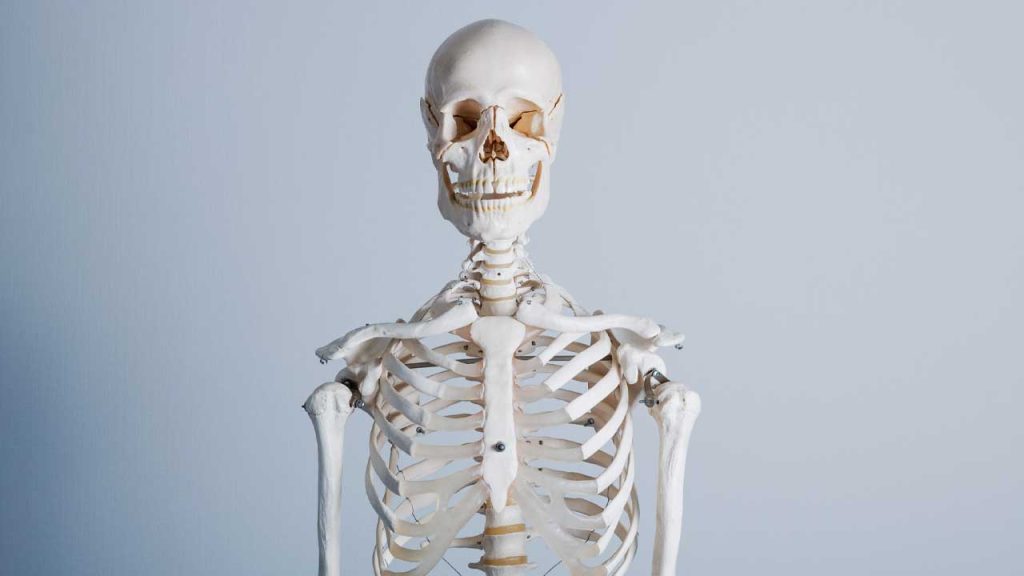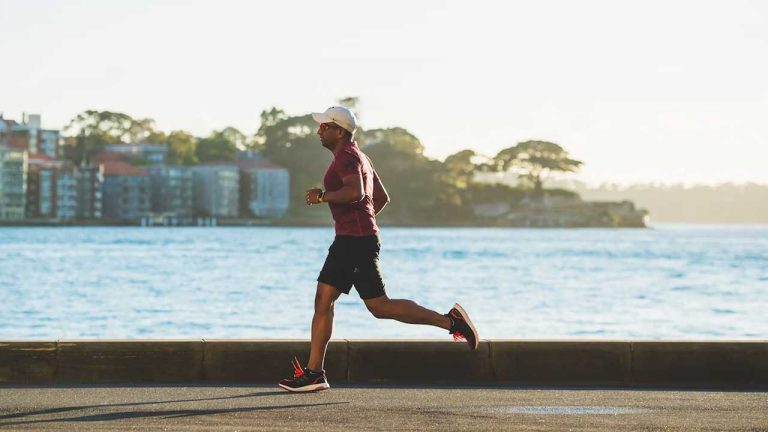Does Stretching Make You Taller? A Straightforward Answer

ListedFit is reader-supported. When you buy through links on our site, we may earn a small commission.
Are you trying to reach new heights, both literally and figuratively? Many people wonder if stretching exercises can help them grow taller.
The idea that stretching can increase height might seem appealing, especially for those who are unhappy with their current height or just want to add a few extra inches.
Let’s dive into this topic and find out the truth about stretching and its potential impact on height.
Quick Summary

Stretching has numerous health benefits like improving flexibility, posture, and blood flow. Although it doesn’t exactly make you taller, it can enhance your posture, making you appear taller.
A better posture can help you stand straighter and more confident, which creates the illusion of added height.
It’s essential to understand the factors that contribute to height, such as genetics, environmental aspects like diet and exercise, and how stretching might play a role in it.
Key Takeaways
- Stretching can improve posture, giving the appearance of being taller
- Genetics, diet, exercise, and other factors influence your actual height
- Engaging in regular stretching exercises can help with flexibility, blood flow, and overall body health.
Contents
Does Stretching Make You Taller?
You might have wondered if stretching can make you taller. While it’s true that stretching has many benefits, such as improved flexibility and mobility, better athletic performance, and improved blood flow, it doesn’t directly make you taller1. However, stretching can improve your posture, which can make you appear taller2.
When you stretch, you’re working on the flexibility of your muscles and tendons. This loosens them up and allows for better mobility3. Having loose and flexible muscles can help maintain the natural curvature of your spine, which can lead to better alignment and posture. Good posture has the bonus effect of making you look taller and more confident. So, while stretching might not add inches to your height, it can give you the appearance of being taller.
Some specific stretches that can help improve your posture include the cat-cow stretch, child’s pose, and the cobra stretch4. You can try adding these to your daily routine to enhance your flexibility and posture.
To sum up, stretching can’t make you physically taller, but it can contribute to better posture, which in turn makes you appear taller. Remember to stretch regularly, if not daily, then at least several times a week, to reap the benefits of improved flexibility and the illusion of increased height.
Footnotes
- https://www.goodrx.com/well-being/movement-exercise/does-stretching-make-you-taller ↩
- https://betterme.world/articles/can-stretching-make-you-taller/ ↩
- https://stretch.com/blog/does-stretching-make-you-taller/ ↩
- https://www.wikihow.com/Get-Taller-by-Stretching ↩
Understanding Stretching
When it comes to stretching, you might wonder how it affects your height. Let’s dive into the world of stretching, including the difference between dynamic and static stretching, and see what they might do for your stature.
Dynamic vs Static Stretching – What’s The Difference?
Firstly, it’s essential to distinguish between dynamic stretching and static stretching. Dynamic stretching involves moving your body through a range of motions that target specific muscle groups. This type of stretching is excellent for warming up before exercise, as it helps increase blood flow and flexibility.
For example, you could perform leg swings to warm up your hamstrings and hip flexors, or arm circles to loosen up your shoulders. Dynamic stretching is best done before engaging in physical activities, as it prepares your muscles for the work they’re about to do.
On the other hand, static stretching is about holding a stretch position for a certain amount of time, usually around 20-30 seconds. As you relax into the stretch, you’ll feel some discomfort, but not pain. This type of stretching is great for cooling down after a workout, as it helps alleviate muscle tension and aids in recovery.
An example of a static stretch is touching your toes to stretch your hamstrings, or pulling your elbow across your chest to stretch your triceps. Static stretching is best performed after your muscles have warmed up, meaning post-workout or after a light warm-up session.
While stretching can definitely improve flexibility, posture, and reduce muscle tension, it’s not likely to have a significant impact on your height. Your bones determine your height, not your muscles. So, keep stretching in your routine for its numerous benefits, but don’t rely solely on it for increasing your stature.
Stretching and Posture
Why You NEED to Have a Good Posture
Having a good posture is essential for your overall health. When you maintain proper alignment, it can prevent muscle strain, back pain, and other issues that come from slouching or poor positioning. Good posture also helps you appear taller and more confident.
One common issue contributing to poor posture is a forward pelvic tilt. This happens when the hip flexors tighten, causing the pelvis to tilt forward. Addressing this issue with targeted exercises and stretches can make a big difference in your posture and how tall you appear.
Exercises for Good Posture
There are several exercises and stretches you can do to improve your posture. Here are a few that specifically target tight hip flexors and promote better alignment:
- Hip Flexor Stretch: To perform this effective stretch, assume a lunge position with one foot in front and the other knee resting on the ground. Tilt your pelvis up, engaging your glutes and core. Hold this stretch for 20-30 seconds on each side.
- Child’s Pose: This relaxing yoga pose is beneficial for lengthening your spine. Begin by sitting on your heels with your knees spread apart. Lower your chest toward the floor and reach your arms forward, actively stretching through your fingertips. Hold this position for a few deep breaths.
- Cat-Cow: This stretch is great for mobilising your spine. On all fours, inhale as you arch your back, dropping your belly toward the ground while lifting your head and tailbone. As you exhale, round your spine, tucking in your chin and tailbone. Repeat this movement several times with your breath.
Remember, stretching regularly can help you maintain good posture and prevent muscle imbalances. So, don’t hesitate to incorporate these exercises into your daily routine. With consistent effort, you’ll see improvements in your posture and may even appear taller.
The Skeletal System and Growth

The Role of Your Genetics and DNA
When it comes to your height, genetics and DNA play a crucial role. It is estimated that 60-80% of height differences are due to genetics, while the remaining 20-40% is influenced by environmental factors like nutrition. Each person has a unique combination of genes inherited from their parents, which determines their potential for growth. But remember, reaching your full height potential is also affected by other factors such as diet and general health.
What Are Growth Plates?
Growth plates are areas of active bone development found at the ends of the long bones in your body. As new bone is formed at the growth plates, these long bones get longer, and you get taller. During the first year of life, babies can grow up to 50% in height.
Between the ages of 2 and 5, children continue to grow quickly. Most individuals gain about 2 inches in height every year until they reach puberty, after which they can experience growth spurts of around 4 inches per year.
What About Bone Structure and Compression?
Your bone structure and the way it handles compression also influence your height.
For instance, your spine’s length and flexibility can have an impact on how tall you appear. While stretching alone doesn’t make you taller, it does improve flexibility and posture, giving the impression of being taller.
Regular stretching can also help maintain the health of your bones and joints, reducing the risk of conditions like osteoporosis.
Your height is influenced by a combination of genetics, DNA, growth plates, and bone structure. Although you cannot significantly change these factors, living a healthy lifestyle and maintaining good posture can help you reach your full height potential.
Stretches to Get Taller
In order to increase one’s height, it is widely believed that performing certain stretches can be beneficial.
The stretches below aim to elongate the spine and improve overall posture, potentially resulting in an additional few inches of height.
Various exercises, such as the cat-camel stretch, cobra pose, and hanging from a bar, are commonly recommended to promote spine decompression and stretch the muscles supporting the spinal column.
While these stretches may provide temporary relief and help improve posture, it is important to note that their actual impact on increasing height remains a topic of debate among experts.
You need to approach the idea of getting taller through stretching with a realistic perspective and consider other factors, such as genetics and overall health, that contribute to your height.
If you’re looking to improve your posture and potentially appear taller, adding some of these stretching exercises into your daily routine is a brilliant idea!
While stretching doesn’t inherently increase your height, it can help improve your overall flexibility and posture, making you look taller.
I’ve compiled a few recommendations below, separated into yoga and Pilates exercises as well as some general stretching routine tips.
Yoga and Pilates
Yoga and Pilates have some fantastic ways to stretch and strengthen your body:
Cobra pose: This classic yoga pose helps stretch your spine and strengthen your lower back muscles. Lie on your stomach, place your hands below your shoulders, and slowly lift your chest off the ground while keeping your hips and tops of the feet on the floor.
Cat-cow pose: This one helps to stretch your spinal muscles and opens up your chest. Start in a tabletop position with your hands under your shoulders and your knees under your hips. Arch your back as you inhale (cow) and round your back as you exhale (cat).
Child’s pose: If you want to give your back and hips a gentle stretch, try this classic yoga pose. Start in a kneeling position and sit back on your heels, then lean forward with your arms extended, planting your palms on the ground.
Stretching Routine Tips
When designing your stretching workout, consider these tips:
- Warm-up: Before starting your stretching session, make sure you warm up to get your blood flowing and muscles ready. You can do this by walking, jogging, or doing some dynamic stretches.
- Frequency: Aim to stretch at least 3 times per week. You can do this as a standalone workout or after other physical activities.
- Variety: Mix up your routine to target different muscle groups. Combine the above-mentioned yoga poses with other stretching exercises like toe touches, forward bends, and lunges.
- Hold and breathe: When you’re stretching, hold each pose for 15-30 seconds and practice deep, slow breathing. This will allow your muscles to relax and increase the stretch’s effectiveness.
Remember to listen to your body while stretching, and never push your muscles past their limits. Enjoy your stretching workouts, and bask in the long-term benefits of better flexibility and posture.
Impact of Nutrition and Diet
Importance of a Balanced Diet
A balanced diet is essential in maintaining overall health and well-being. It is particularly important for you when it comes to your height potential. Your body needs a variety of nutrients to ensure proper growth and development. Consuming an array of foods from different food groups can help provide your body with the necessary nutrients for height increase.
Vitamins and Minerals for Growth
Several vitamins and minerals play a vital role in ensuring your growth, especially during your adolescence. Here are some essential nutrients for height increase:
- Protein: Proteins are crucial for your growth as they are the building blocks of your body’s tissues, muscles, and bones. To promote growth, consume protein-rich foods such as lean meats, poultry, beans, lentils, and dairy products.
- Vitamin A: This vitamin helps in the proper development of bones and contributes to overall bone strength. Foods rich in vitamin A include carrots, sweet potatoes, and spinach.
- Vitamin D: Vitamin D is necessary for healthy bone growth and development. It aids in the absorption of calcium in your body, which is crucial for strong bones. Foods rich in vitamin D include fatty fish, eggs, and fortified dairy products. Exposing yourself to sunlight also helps your skin produce this essential vitamin.
By ensuring your diet provides you with the right balance of these essential nutrients, you can help increase your potential for growth during your adolescence. Remember, a well-balanced diet, along with regular stretching exercises, can be beneficial in achieving proper posture and an overall healthy lifestyle.
Influence of Age, Sex and Health
Puberty and Growth Spurt
During your younger years, you’ll observe changes in your height. Most individuals gain about 2 inches in height every year between age 1 and puberty. Once you reach puberty, you can experience a growth spurt, gaining 4 inches in height per year. Teenage years are particularly crucial for height increase, as this is when you’ll experience your most significant growth.
Gender Differences in Height
There are noticeable differences in height between boys and girls, and these disparities become more apparent during puberty. Typically, girls enter puberty earlier than boys, which means they’ll have their growth spurt sooner. As a result, girls might appear taller than boys at first, but eventually, boys will catch up and often surpass them in height.
Health Conditions That Can Affect Height
Your height can be influenced by various health conditions, some of which include:
- Down syndrome: Individuals with Down syndrome tend to have shorter stature due to the genetic disorder’s effect on growth and development.
- Turner syndrome: This condition only affects girls and results in shorter height and delayed puberty. It’s caused by the absence or partial presence of one of the X chromosomes.
- Marfan syndrome: This genetic disorder affects the body’s connective tissues, including those in the growth plates of bones. Although individuals with Marfan syndrome can be tall, their height is often disproportionate to their arm and leg length.
While stretching may not directly make you taller, maintaining good posture and flexibility can help you make the most out of your growth potential.
Frequently Asked Questions
Can stretching exercises help in height growth?
Yes, stretching exercises can help with height growth to some extent. Although they won’t directly increase your height, they can improve your posture and make you look taller.
Better posture can also contribute to better spinal health, which is essential for maintaining your full height.
At what age does stretching contribute to taller height?
Stretching can contribute to better posture and appearance of taller height at any age. However, it’s essential to develop a regular stretching routine during your growth years, typically before the early 20s, because that’s when your bones and spine are still growing.
Posture improvement can always be done throughout adulthood, but it gets challenging to make significant height change once your growth plates have closed.
What specific stretches are effective for height gain?
Some effective stretches for improving posture and appearing taller include:
* Cobra stretch
* Cat-cow stretch
* Forward fold
* Downward-facing dog
* Side lunges
* Pelvic tilts
These stretches target the muscles responsible for proper posture and spinal alignment, consequently helping you maintain an upright position when standing or sitting.
Is there a difference in stretch-induced height gain for children and adults?
There can be a difference in stretch-induced height gains for children and adults. Children’s bones and spine are still growing, so working on their posture early on can help them reach their full height potential.
Meanwhile, for adults, stretch-induced height gain focuses mainly on improving spinal health and maintaining a good posture as they have already reached their height growth potential.
How often should one stretch to maximize height growth?
To maximize height growth, it’s advisable to stretch daily. Regular stretching sessions can effectively improve flexibility, posture, and overall health.
You can experiment with different stretching routines and see what works best for you and your schedule, but consistency is vital.
Can combining stretching with other practices enhance height increase?
Yes, combining stretching with proper nutrition, sleep, and exercise may enhance height increase. Eating a balanced diet, getting adequate sleep, and engaging in regular physical activities like swimming and cycling can also contribute to better posture and improved overall health.
But it’s essential to understand that your genetic makeup plays a significant role in your height, and combining these practices won’t guarantee an enormous increase in height. But these healthy habits can help you reach and maintain your full height potential.
Author
- Danny Loeb is a qualified Personal Trainer, Fitness Model and Writer. He enjoys blogging about health and fitness, messing around with Photoshop, and sharing his experiences with everyone.
Latest entries
 NutritionFebruary 6, 2024What Are Fillers in Supplements? – Unveiling Inactive Ingredients
NutritionFebruary 6, 2024What Are Fillers in Supplements? – Unveiling Inactive Ingredients FitnessAugust 23, 2023Best Post-Workout Foods: Great Ideas for Recovery and Results
FitnessAugust 23, 2023Best Post-Workout Foods: Great Ideas for Recovery and Results BulkingJuly 26, 2023Is Rice Good for Bulking? Unveiling the Truth
BulkingJuly 26, 2023Is Rice Good for Bulking? Unveiling the Truth CultureJuly 15, 2023Why Do People Hate Planet Fitness? Read This Before You Join!
CultureJuly 15, 2023Why Do People Hate Planet Fitness? Read This Before You Join!
Affiliates:
This post may contain affiliate links that at no additional cost to you, the site may earn a small commission. We only recommend products we would use ourselves and all opinions expressed on this site are our own.
General Advice:
The information provided in this article is for general informational purposes only. It is not intended as a substitute for professional advice. Always consult with a qualified healthcare professional before starting any new diet, exercise program, or making changes to your health routine.
Accuracy Advice:
While we strive to provide up-to-date and accurate information, the content in this article may not reflect the most current research or medical guidelines. We encourage readers to do further research and consult with professionals for more personalized advice.
Our Recommendations:
The products and services mentioned in any of our articles are recommended based on our independent research and personal experience. We are not sponsored by any company. We aim to suggest products and services we believe are of high quality and could be beneficial to our readers.






